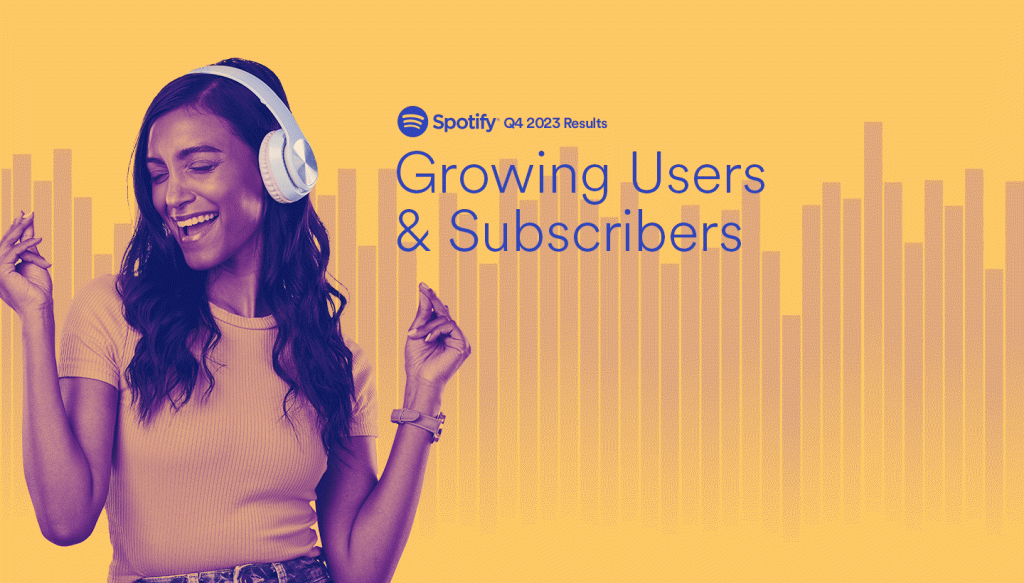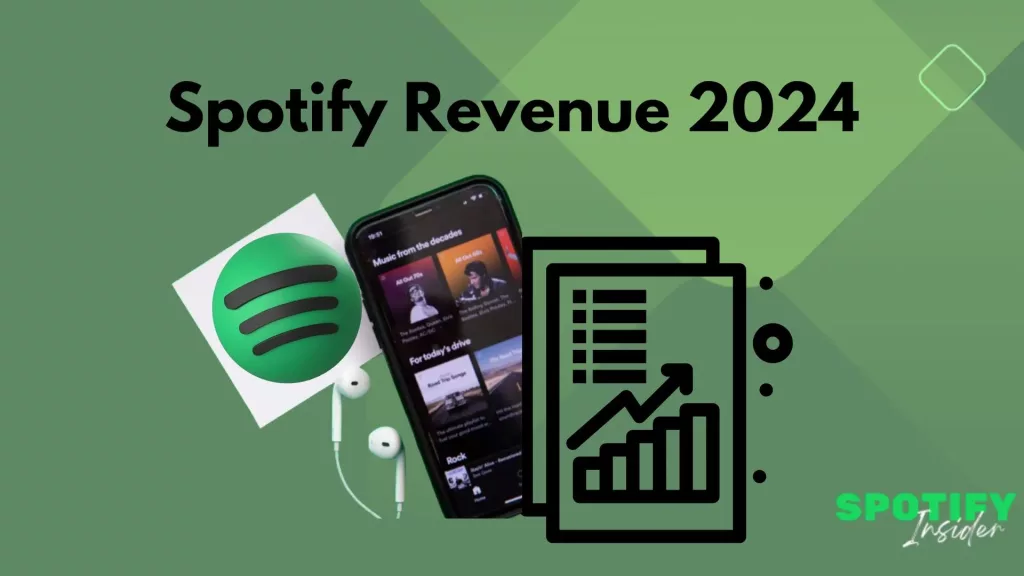In the realm of music streaming, Spotify reigns as the paramount platform worldwide, boasting the largest subscriber base. Users gain entry to an extensive archive of music, podcasts, and diverse audio content upon simple registration. Operating under the freemium model, Spotify offers both free and premium access. Free access entails compromises such as lower audio fidelity, intermittent advertisements, and the necessity of an active internet connection. Conversely, Spotify Premium subscribers indulge in uninterrupted, high-fidelity audio playback and the convenience of offline song downloads.
Conceived in 2006 within the cultural nexus of Stockholm, Sweden, Spotify emerged from the visionary minds of Daniel Ek and Martin Lorentzon. Fueled by the imperative to counteract the rampant online music piracy plaguing the early 2000s, their endeavor birthed a legal bastion for digital music consumption.
Amidst considerable negotiation, Spotify materialized in 2008, ultimately securing consent from record labels by offering them a collective 20 percent ownership stake. Its ascent was meteoric, buoyed by a strategic alliance with Facebook, propelling it swiftly into the limelight. Weathering the shift towards mobile usage, Spotify made its initial public offering in April 2018, commanding a market capitalization of $26.5 billion following the inaugural day of trading.

The platform has not been immune to censure, particularly from musicians, who bemoan its meager compensation. Assertions of fostering inclusivity within the music sphere have been met with skepticism, particularly given that the top four music conglomerates furnish 87 percent of the content available on Spotify.
Whether deemed equitable or otherwise, with physical music mediums largely relegated to the past (save for aficionados of vinyl records), Spotify reigns supreme as the quintessential mode of music consumption in this epoch. Nevertheless, its dominance is not uncontested. Competitors such as Deezer, Pandora, and notably Apple Music pose formidable challenges, the latter emerging as the preeminent choice for consumers in the United States and select other nations.
Diversifying its portfolio, Spotify has ventured into the realm of podcasts, procuring prominent podcast hosts and networks like the Joe Rogan Experience, The Ringer, and Gimlet Media. This expansion is viewed as pivotal in fortifying its streaming service, potentially enhancing user engagement and retention.
Furthermore, mirroring the trajectory of numerous social platforms, Spotify introduced a live audio feature reminiscent of Clubhouse, initially branded as Greenroom before being rebranded as Spotify Live. The allure of live audio experiences has somewhat waned in the wake of the pandemic; however, Spotify and Twitter appear poised to capitalize on any residual interest.
A compendium of data and statistics pertaining to Spotify awaits below, offering further insight into its multifaceted operation.
Spotify Key Statistics
In 2023, Spotify accrued a revenue of €13.24 billion, marking a 12.9% uptick compared to the previous year.
Despite this growth, Spotify has yet to disclose any net profits. Notably, in 2022, the company recorded a loss amounting to €532 million.
A staggering 551 million individuals engage with Spotify on a monthly basis, with 220 million among them holding subscription accounts.
The platform boasts a vast library comprising 100 million songs alongside a collection of five million podcasts.
Related Search: Best Crime Podcasts on Spotify
Spotify Overview
| Launch date | 23 April 2006 |
| HQ | Stockholm, Sweden |
| People | Daniel Ek (CEO, co-founder), Martin Lorentzon (co-founder) |
| Company type | Public (NYSE: SPOT) |
| Industry | Music streaming |
Spotify Revenue
In 2023, Spotify witnessed a notable surge in its yearly earnings, marking a 12% upturn, amounting to a staggering €13.24 billion. Over the course of the last half-decade, the company has managed to achieve an impressive feat, tripling its revenue.
Spotify annual revenue 2016 to 2023 ($bn)
| Year | Revenue (€bn) |
|---|---|
| 2016 | 2.94 |
| 2017 | 4.62 |
| 2018 | 5.25 |
| 2019 | 6.76 |
| 2020 | 7.88 |
| 2021 | 9.66 |
| 2022 | 11.72 |
| 2023 | 13.24 |
Spotify Average Revenue Per User
Spotify average revenue per user decreased in 2023 to €4.27, the lowest reported value.
Spotify Average Revenue Per User 2015 to 2023 ($)
| Year | Average revenue per user (€) |
|---|---|
| 2015 | 6.84 |
| 2016 | 6.2 |
| 2017 | 5.32 |
| 2018 | 4.89 |
| 2019 | 4.86 |
| 2020 | 4.41 |
| 2021 | 4.29 |
| 2022 | 4.54 |
| 2023 | 4.27 |
Spotify Profit
Since going public, Spotify has consistently failed to report an annual net profit. This can be attributed in part to its royalty fee split arrangement with publishers, whereby it retains only 30 percent of its profits.
Spotify annual net income / loss 2009 to 2023 ($mm)
| Year | Net income / loss ($mm) |
|---|---|
| 2009 | -18.8 |
| 2010 | -28.5 |
| 2011 | -45.4 |
| 2012 | -83.6 |
| 2013 | -63 |
| 2014 | -188 |
| 2015 | -230 |
| 2016 | -539 |
| 2017 | -1235 |
| 2018 | -78 |
| 2019 | -186 |
| 2020 | -581 |
| 2021 | -34 |
| 2022 | -430 |
| 2023 | -532 |
Spotify Users
In 2023, Spotify boasted 551 million unique users, comprised of individuals who either utilize the platform for free with advertisements or opt for a subscription for ad-free access.
Spotify annual users 2015 to 2023 (mm)
| Year | Users (mm) |
|---|---|
| 2015 | 77 |
| 2016 | 104 |
| 2017 | 138 |
| 2018 | 180 |
| 2019 | 232 |
| 2020 | 299 |
| 2021 | 365 |
| 2022 | 433 |
| 2023 | 551 |
Spotify Users by Region
In 2023, Spotify’s subscriber base in the rest of the world exceeded that of Europe for the first time, establishing itself as the largest market. The United States stands out as the country with the highest number of users, boasting over 100 million Spotify subscribers.
Spotify annual users by region 2016 to 2023 (mm)
| Year | Europe | North America | Latin America | Rest of World |
|---|---|---|---|---|
| 2016 | 40 | 36 | 20 | 8 |
| 2017 | 51 | 46 | 28 | 13 |
| 2018 | 66 | 56 | 38 | 20 |
| 2019 | 83 | 65 | 49 | 35 |
| 2020 | 102 | 77 | 66 | 54 |
| 2021 | 124 | 88 | 80 | 73 |
| 2022 | 138 | 97 | 95 | 103 |
| 2023 | 159 | 111 | 116 | 165 |
Spotify Subscribers
Spotify had 220 million subscribers in 2023, a 17% increase year-on-year. It surpassed 200 million in Q4 2022.
Spotify annual subscribers 2015 to 2023 (mm)
| Year | Subscribers (mm) |
|---|---|
| 2015 | 22 |
| 2016 | 36 |
| 2017 | 59 |
| 2018 | 83 |
| 2019 | 108 |
| 2020 | 138 |
| 2021 | 165 |
| 2022 | 188 |
| 2023 | 220 |
Spotify Subscribers by Region
Spotify had 86 million subscribers in Europe and 62 million in North America, aligning with the regional splits for users.
Spotify annual subscribers by region 2018 to 2023 (mm)
| Year | Europe | North America | Latin America | Rest of World |
|---|---|---|---|---|
| 2018 | 33 | 26 | 17 | 7 |
| 2019 | 43 | 32 | 22 | 11 |
| 2020 | 54 | 40 | 29 | 15 |
| 2021 | 66 | 48 | 33 | 18 |
| 2022 | 73 | 54 | 39 | 22 |
| 2023 | 86 | 62 | 46 | 26 |
Spotify Age Demographics
The majority of Spotify users are under the age of 35; however, the average age has been steadily increasing over the years as music streaming emerges as the predominant listening format across all age groups.
Spotify age demographics 2024 (%)
| Age | Percentage of users |
|---|---|
| 18-24 | 26 |
| 25-34 | 29 |
| 35-44 | 16 |
| 45-54 | 11 |
| 55+ | 19 |
Spotify Gender Demographics
Women make up 56% of Spotify’s usage, which matches with surveys conducted on Apple Music users.
Spotify gender demographics 2024 (%)
| Gender | Percentage of users |
|---|---|
| Female | 56 |
| Male | 44 |
Spotify Usage Time by Region
North American users spend the most time on Spotify every day, European users spend the least amount of time on the platform.
Spotify daily usage time by region 2022 (minutes)
| Region | Average daily usage (minutes) |
|---|---|
| North America | 140 |
| Middle East & Africa | 124 |
| Latin America | 117 |
| Asia Pacific | 110 |
| Europe | 99 |
Conclusion
In conclusion, Spotify revenue in 2024 reflects its continued growth trajectory driven by global expansion, subscriber base increase, and revenue diversification. Despite facing challenges from market competition, regulatory scrutiny, and technology evolution, Spotify remains well-positioned for future growth through innovations, strategic partnerships, and a focus on enhancing user experience.
Related Search:- Spotify Royalty Calculator
FAQs
How does Spotify generate revenue?
Spotify generates revenue through subscription fees, advertising, and licensing fees from content creators.
What factors contribute to Spotify revenue growth?
Factors such as global expansion, subscriber base increase, and revenue diversification contribute to Spotify revenue growth.
What are the challenges Spotify faces in maintaining its revenue streams?
Spotify faces challenges such as regulatory concerns, copyright issues, and the need for continuous technological adaptation.
How does Spotify differentiate itself from its competitors?
Spotify differentiates itself through personalized recommendations, podcasting expansion, and original content production.
What are Spotify’s strategies for future growth?
Spotify’s strategies for future growth include market penetration in emerging economies, enhanced user experience, and strategic partnerships.



